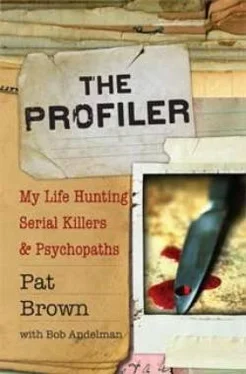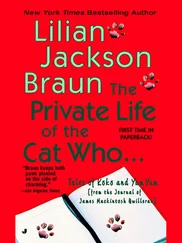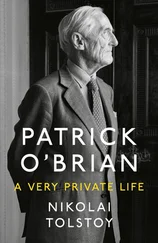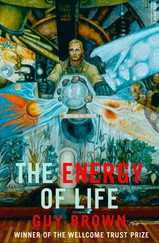THE LAST POSSIBILITY was that neither Curtis Cox nor Craig Landon was involved in the crime.
However, there was little evidence to point to any other party having motive to abduct and kill Christine Landon, or to any other party having access to her house. The only exception to this would have been a hired hit by Craig Landon. Another Craig, Craig Bright, was acquainted with Christine and later convicted of the sexual homicide of a coworker in a state down south. He was someone who should have at least been eliminated as a suspect. Supposedly, Christine had known him for a short period of time due to her work, but Craig Landon reportedly did not have a relationship with this other Craig or even know him.
This case should have been reopened and reinvestigated with open minds and new investigative avenues. I finished my profile and told the sheriff that they should reopen the investigation and take a hard look at Craig Landon just as Cox’s lawyer asserted. The physical evidence pointed to him, the behavioral evidence pointed to him, and the motive pointed to him. But the case files are still locked up and the killer, whoever he is, remains free. I can only hope one day justice will prevail.
Not every murder in the United States is caused by a serial killer, but there are a lot of them. It used to be that we worried about our sons dying in war or our daughters in childbirth. Now we worry about our children being murdered at college or in the comfort of their own homes.
And the average American feels powerless to do anything about it.
Criminal profiling is a great tool to use in solving murder cases and taking dangerous predators off our streets. The more we understand about how men (and some women) become psychopaths and criminals, their motives for doing bad things, and how they go about committing their crimes, the better off we will all be in recognizing them in our lives. Then we can change our society to prevent our kids from turning into psychopaths, reduce crime, keep from becoming victims, and solve crimes quickly so the perpetrators get put away where they can’t hurt anyone anymore.
The night that I first came to suspect that Walt Williams murdered Anne Kelley, I thought, I’ll gather all the evidence, deliver it to the police, and by morning, they will come and arrest him, and he will go away to jail. That was what I expected would happen. I never dreamed it would take more than that.
When the police showed no interest in the information I brought them, at first I merely couldn’t believe it. And because the killer, whether it is Walt Williams or someone else, has never been caught, I had a second thought, one that terrorized me for years: Oh, my God, the murderer is still out there.
I first started researching serial homicide and sexual crimes, serial killers and psychopaths, not to become a criminal profiler or to start a national organization, but to play devil’s advocate, because I didn’t want to suspect someone of a heinous crime for no reason. I was surprised to find that some police investigations were shallow at best, and certainly I was amazed that quite a few police officers didn’t understand the behavior of psychopaths or serial killers. I thought, How is this possible?
I hit an iceberg, a massive problem in our society: that Anne Kelley could go running one night in my sleepy, safe hometown, past the baseball field where my sons played every day, be brutally murdered, and a week later nobody mentioned her name ever again-how could this be? The newspapers went silent on the subject, the people in town pretended she never existed, her case was never solved, while the killer hopped, skipped, and walked away. And this was repeated over and over in the surrounding communities-in fact, all across America.
In time I was haunted not just by Anne Kelley but by Deborah Joshi, Lisa Young, Vicki Davis, Sarah Andrews, Mary Beth Townsend, Doris Hoover, and hundreds more women nobody knew or cared anything about. My neighbors slept well at night thinking that our system of dealing with serial homicide was smart and effective, that we always caught the bad guys.
The system, however, is broken.
Look across the United States, in your own backyard, and you can start multiplying how many serial killers are running free. For forty years, the Green River Killer in Washington State was able to kill women whenever he felt like it. The man called the Grim Reaper, who slaughtered a multitude of women in Los Angeles, is still out there. Dennis Rader roamed free as a bird for thirty-one years, killing women whenever he felt like it. Finally, he was caught and charged as the BTK strangler for the murders of women in Wichita, Kansas, but there is still a long list of unsolved sexual homicides in police files. If Rader didn’t kill them (and he likely did not), Wichita still has one or more serial killers at large.
FOR SOME REASON, I am one of the few people in the United States looking at the big picture and only because I tripped over it. This wasn’t the kind of trouble I ever looked for in my life before Anne Kelley.
I believe that I ended up with this information and perspective in order to do something about it. I don’t know why Walt Williams came to live in my house and shortly thereafter a woman I never met was murdered near my home. I don’t know why I’m the type of person who would actually put two and two together and gather up evidence and take it to the police. Maybe if I hadn’t been there, no one would have gone to the police. Most people would have just shrugged their shoulders and erased the crime from their minds.
So why me? Well, why not me, as they say! Maybe I have an inquisitive mind. Maybe I’ve always been a curious person about certain things. Maybe I’m a logical, deductive person, and I can add things up. But whatever the reason, I was there, it happened in my neighborhood, and I had this suspect in my house.
It was brought to me, whether by destiny or fate, but I felt I could make a difference, and that’s what I set out to do, and I’ve sought to do that ever since.
Twenty years later, I’m just getting to the point where I feel I will be able to influence the changing of the American criminal justice system. That’s my goal, and there are still plenty of places I have to go. For starters, I developed the first criminal profiling program in the country outside of the FBI, one intended to provide training for law enforcement officers and future profilers in the United States and in other countries struggling with the same issues.
I want the police to learn how to do this themselves. I want them to have more time and more funds to do it. Sometimes, they just don’t have enough hours to focus on each homicide they’re presented. They work so many cases, run down so many leads, and spend a good deal of their days in court. They write stacks of paperwork. We should actually consider ourselves fortunate when our police detectives have the luxury to put their full effort into an investigation. Sometimes we are lucky if they do any investigating at all. And when they actually solve a crime and get all their ducks in a row, it’s quite an accomplishment under horrible work conditions.
The FBI has a dedicated domestic crime computer it calls ViCAP. It is supposed to assist homicide detectives and investigators and fill in gaps in their knowledge base. But it doesn’t catch serial killers. It’s a poor system because the inputs are questionable and it is too unwieldy. Some police investigators rush through the form and the information is less than accurate. Other detectives just toss the damn form because it’s so long they can’t be bothered. The end result is a confusing mess. Some of the information is so vague that it serves little purpose. “The woman was strangled and found outside.” Oh, grand! Do you know how many women are strangled and found outside across the United States? Is that going to identify a serial killer? Is that a common linkage between that serial killer’s crimes? I don’t think so.
Читать дальше












